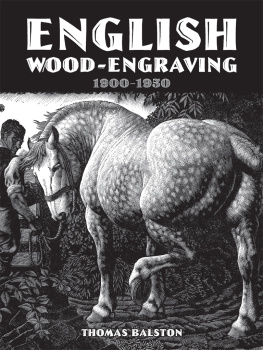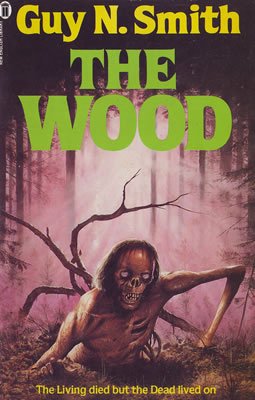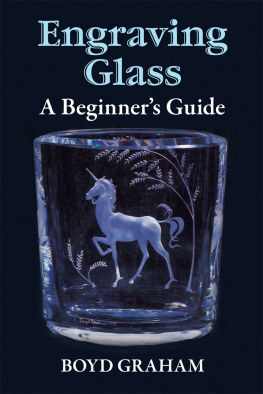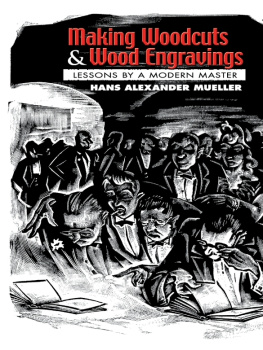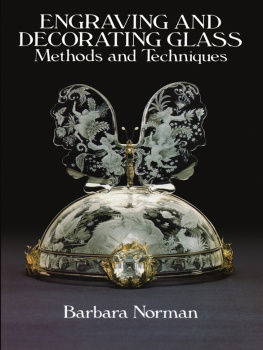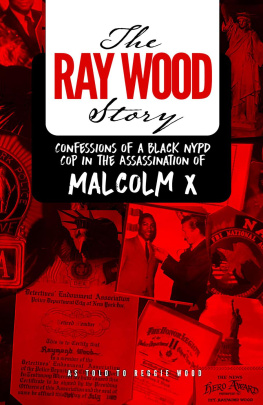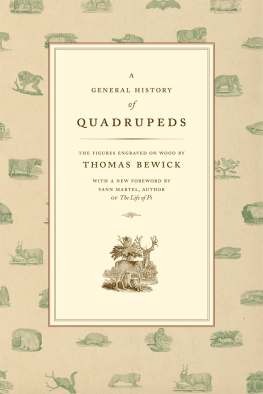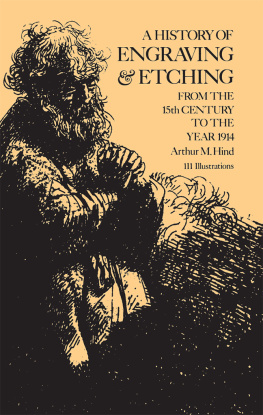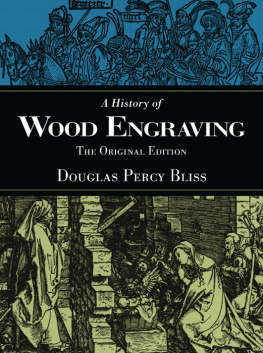ENGLISH
WOOD-ENGRAVING
1900-1950

ERIC RAVILIOUS . Decorations for Kynoch Press, 1933

GWENDOLEN RAVERAT . Silver Street, Cambridge, 1938
ENGLISH
WOOD-ENGRAVING
1900-1950
THOMAS BALSTON

D OVER P UBLICATIONS , I NC .
M INEOLA , N EW Y ORK

ERIC GILL : A Garden enclosed
Bibliographical Note
This Dover edition, first published in 2015, is an unabridged republication of the work originally published by Art and Technics, Ltd., London, in 1951. This collection of wood-engravings, with Thomas Balstons essay, was first published in November 1950 as a special issue (number 5) of the quarterly Image.
Library of Congress Cataloging-in-Publication Data
Balston, Thomas.
English wood-engraving 19001950 / Thomas Balston.
pages cm
Includes bibliographical references.
eISBN-13: 978-0-486-80807-9
1. Wood-engraving, English. I. Title.
NE1144.B34 2015
761.20942dc23
2015020475
Manufactured in the United States by RR Donnelley
79878X01 2015
www.doverpublications.com
INTRODUCTION
FROM THE death of Bewick in 1828 till nearly the end of the nineteenth century, the art of original wood-engraving was dormant in England; all the skill of the craftsmen was employed on the reproduction of works of artists who had little or no interest in the medium. But the period covered by this book, 19001950, saw the rise of the now flourishing school of artist-craftsmen whose works are so fundamentally different in design and technique from anything which preceded them as to constitute a new branch of the art.
Much of this work has appeared in books, and is now familiar to a host of readers, thousands of whom had the opportunity of appreciating its variety and beauty at the exhibition, Wood-Engraving in Modern English Books, held by the National Book League in the autumn of 1949. But that exhibition, as its title showed, could not include any of the immense number of independent wood-engravings made by British artists during this half-century. Such engravings are often the most characteristic and ambitious of an artist's works because he has complete freedom in choosing their subjects, their sizes and their colour, but, as they are generally published in small limited editions, and can seldom be seen except at temporary exhibitions, they are much less well-known to the public. In this book, therefore, though it covers both these branches of the art, the illustrations have been selected with some bias in favour of the less familiar class.
Among the illustrations will be found eight examples of coloured wood-engraving, a branch of the art which has made great strides of recent years. There are also three examples of the work of Edward Wadsworth, which, though woodcuts and not wood-engravings, had so marked an influence on the work of some engravers that the book would have been incomplete without them.
Though my name appears alone upon the title-page, I must acknowledge a debt to Mr Robert Harling, who asked me to undertake this task, and, with the able assistance of Miss Clare Blanshard, collected hundreds of excellent engravings. From them he selected those which could be most satisfactorily printed by machine. In this selection he bound himself by one invaluable rule, viz. that no engraving should be reproduced except on its original scale. In a few cases, where an engraving of conspicuous merit proved too large for the page, small marginal areas have been omitted, always with the artists approval.
I must also express my gratitude to the National Book League for very kindly permitting me to repeat those passages in my Introduction to their Catalogue which are relevant to the present wider subject-matter.
T. B.

REYNOLDS STONE
CONTENTS

DOUGLAS PERCY BLISS : Device for Shenval Press
THE ENGRAVERS
[The italic page numbers are the illustrations]
ARMOUR , William,
AUSTIN , Robert, r.a.,
BARKER-MILL , Peter,
BEWICK , Thomas,
BLAKE , William,
BLISS , Douglas Percy,
BRABY , Dorothea,
BRAY , W. H.,
BUCKLAND-WRIGHT , John,
CALVERT , Edward,
CHUTE , Desmond,
COOK , Kingsley,
CRAIG , Gordon,
CRAWHALL , Joseph,
DAGLISH , Eric Fitch,
DARWIN , Mrs Bernard,
DICKEY , E. M. OR.,
FARLEIGH , John,
GARNETT , Mrs David,
GARWOOD , Tirzah,
GIBBINGS , Robert,
GILL , Eric, 3n.,
GRIBBLE , Vivien,
GROOM , Mary,
HAGREEN , Philip,
HASSALL , Joan,
HERMES , Gertrude,
HUGHES-STANTON , Blair,
JONES , David,
LAMB , Lynton,
LEE , Rupert,
LEE , Sydney,
LEIGHTON , Clare,
MACKENZIE , Averil,
MACKENZIE , Winifred,
MACKLEY , George,
MACNAB , Iain,
MARSHALL , Rachel,
MAYNARD , R. A.,
MILLER-PARKER , Agnes,
MITCHELL , Marion,
MONSELL , Eleanor,
MOORE , Sturge,
MORGAN , Gwenda,
NASH , John,
NASH , Paul,
NICHOLSON , William,
OCONNOR , John,
PALMER , Samuel,
PATERSON , G. W. Lennox,
PELLEW , Claughton,
PILKINGTON , Margaret,
PISSARRO , Lucien,
RAVERAT , Gwendolen,
RAVILIOUS , Eric,
RICKETTS , Charles,
ROOKE , Noel,
SAVAGE , Reginald,
SHANNON , Charles,
SHORT , Sir Frank,
STONE , Reynolds,
TUNNICLIFFE , C. F.,
UNDERWOOD , Leon,
WADSWORTH , Edward,
WALES , Geoffrey,
WEBB , Clifford,
WHITE , Ethelbert,
WOOD , Leslie,
WORSLEY , John,

ERIC GILL
ENGLISH WOOD-ENGRAVING
1900-1950
THE YEARS BEFORE
THE WORD WOODCUT is commonly used to denote two different things, the woodcut proper and the wood-engraving. They agree, however, in being printed from the surface of the block (a print from a wood block before any work has been done on it would be a black rectangle the size of the block), unlike copper-engravings, which are printed, after the surface has been wiped clean, by pressing the paper into the incised lines into which the ink has been forced.
The woodcut preceded the wood-engraving by many centuries. It was first employed in western Europe to print patterns on textiles. The designs were made on the block by slanting cuts with a knife, so that two cuts more or less parallel could make a V-shaped trench which printed as a white line, like a chalk-line drawn on a blackboard, while the rest of the surface of the block printed black. But when the invention of movable type in the fifteenth century gave rise to a demand for woodcuts to be printed with letterpress, the wooden presses of the period were found too weak to print the large areas of black efficiently. The woodcutters therefore adopted a new technique. Instead of making their designs of white lines on black, they cut away the wood on both sides of lines already drawn upon the block, and removed all bare areas of the surface with a gouge. These lines then printed black, and the rest of the block white. All illustrations were soon made in black line only, and worked on the side-grain or plank of some soft wood so as to lessen the labour of the cutting and gouging. Printer-publishers then found it cheaper to employ an artist only to draw on the block and then get a craftsman to do all the cutting and gouging. Thus woodcutting was degraded to a purely reproductive craft.

